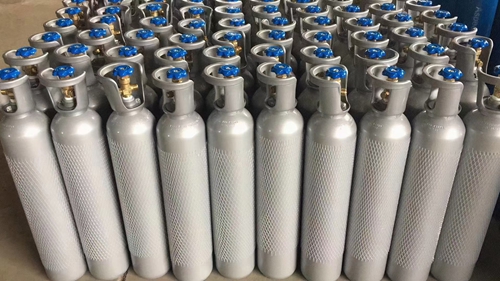
10L Carbon Dioxide Cylinder QF-2 valve (special for beer machine) with a diameter of 159mm
A CO2 cylinder, also known as a carbon dioxide cylinder, is a pressurized container specifically designed to store and transport carbon dioxide gas. Here's a description of the CO2 cylinder:
Material: CO2 cylinders are typically made from durable materials such as steel or aluminum. These materials are chosen for their strength, ability to withstand high pressure, and resistance to corrosion.
Pressure rating: CO2 cylinders are designed to hold and contain carbon dioxide gas under high pressure. They are rated to safely handle specific pressure levels, which are typically measured in pounds per square inch (psi) or bar.
Valve: CO2 cylinders are equipped with a valve system that allows for controlled release or regulation of the carbon dioxide gas. The valve enables the connection of various devices or equipment, such as regulators or hoses, to effectively utilize or transfer the gas.
Capacity: CO2 cylinders come in various sizes and capacities, depending on their intended use. Smaller CO2 cylinders are commonly used for applications such as carbonating beverages or powering paintball guns, while larger cylinders are utilized in industrial settings for tasks like welding or fire suppression. The capacity of a CO2 cylinder is typically measured in pounds or kilograms of carbon dioxide gas that it can hold.
Color coding: CO2 cylinders often have specific color coding to aid in identification and safety measures. While color coding can vary based on regional standards or industry practices, a common convention is to paint CO2 cylinders in silver or gray.
Safety considerations: Proper safety precautions should be followed when handling, storing, or using CO2 cylinders. This includes ensuring secure storage in an upright position, avoiding exposure to extreme heat or flames, and implementing adequate ventilation during operation.
It's crucial to adhere to local regulations and safety guidelines when handling CO2 cylinders and to receive appropriate training on their proper usage and handling procedures.
Always prioritize safety when dealing with pressurized gas cylinders and consult the manufacturer's instructions or relevant authorities for specific guidance.









